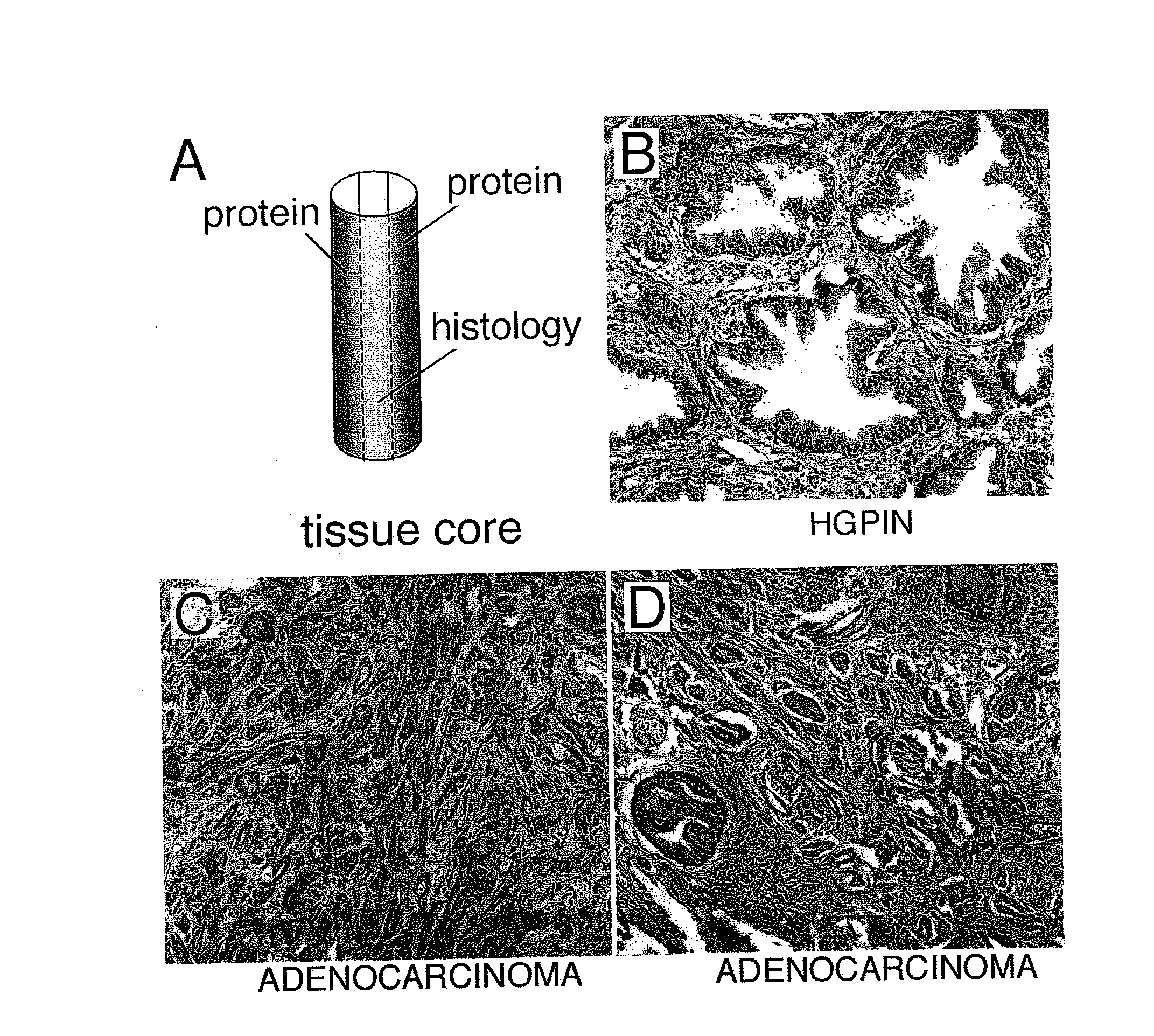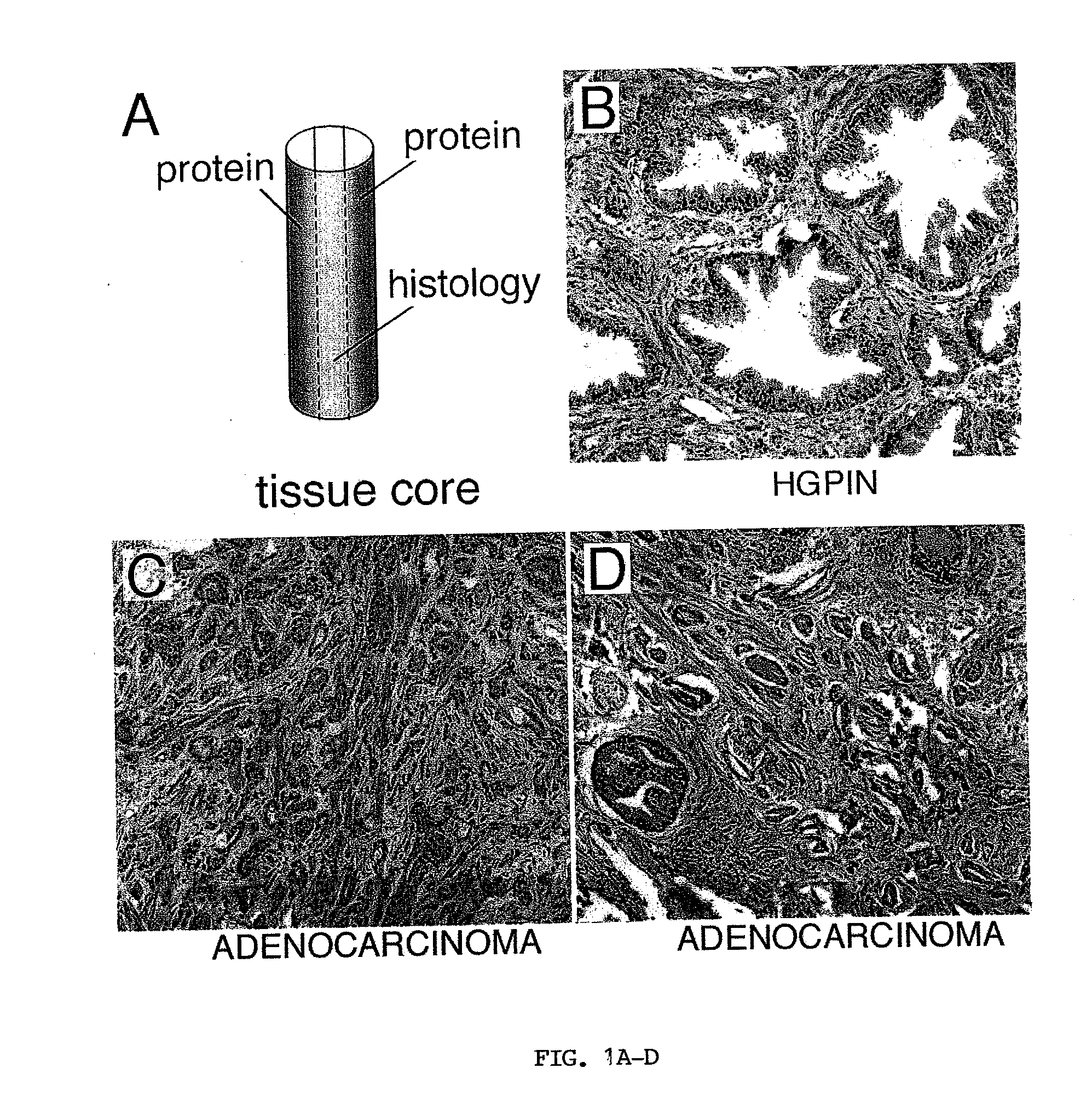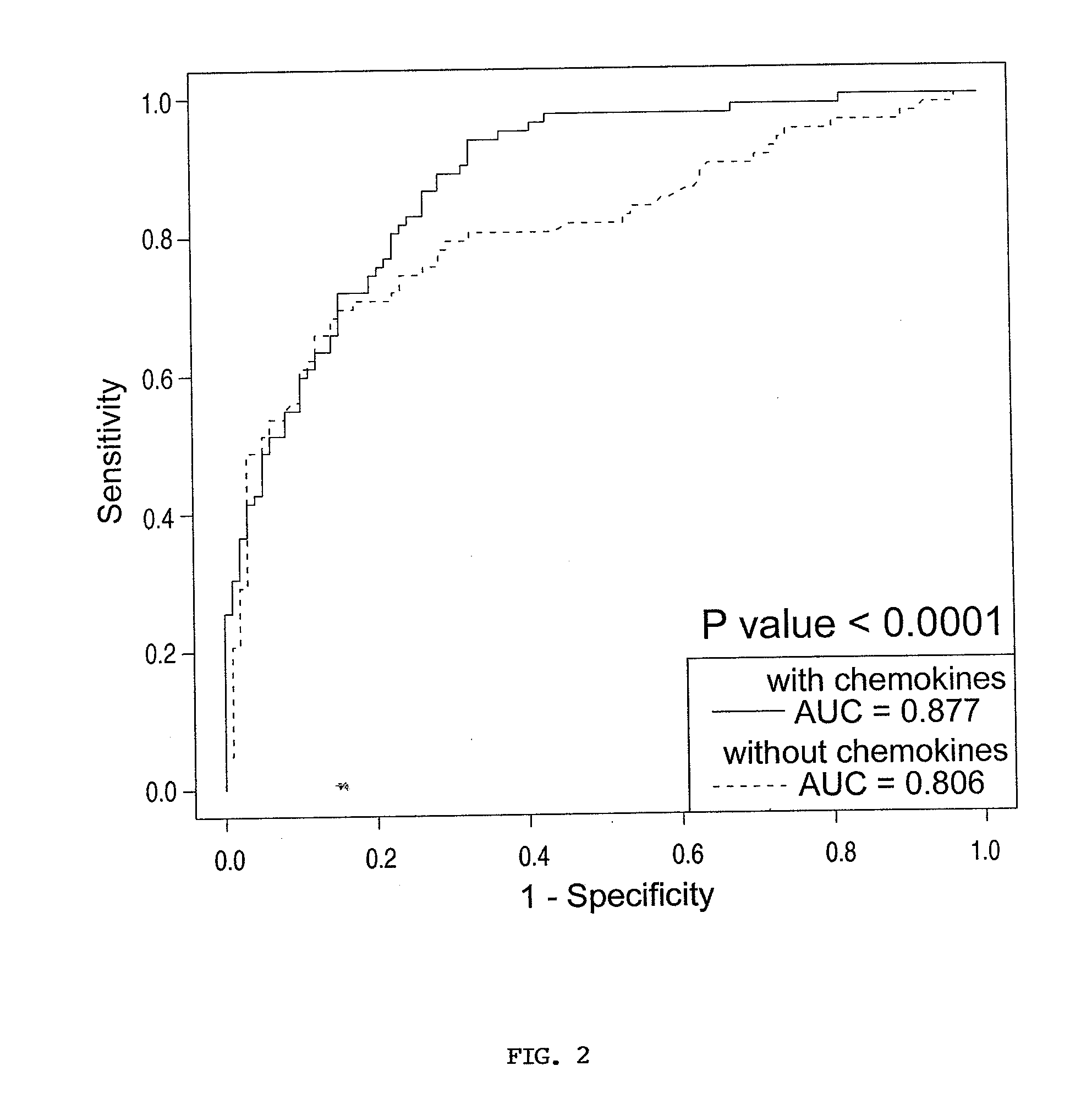Methods for predicting prostate cancer recurrence
- Summary
- Abstract
- Description
- Claims
- Application Information
AI Technical Summary
Benefits of technology
Problems solved by technology
Method used
Image
Examples
example 1
Materials & Methods
[0116]Patient selection. This study was conducted in accordance with the Institutional Review Board, Vanderbilt University. The digital medical record of 660 subjects was retrospectively examined using the Vanderbilt University Urologic Surgery registry of radical prostatectomies performed between 1998 and 2002. Several of these patients were excluded for reasons that included, availability of at least five-year follow-up data, availability of archived fresh frozen peripheral zone tissue, and records of pre-surgical hormone ablation therapy. Patients who had undergone hormone ablation therapy at any point prior to surgery or the demonstration of biochemical recurrence were excluded. Biochemical recurrence following prostatectomy was defined as PSA≧0.2 ng / ml confirmed at least once with another PSA at least two weeks apart, and associated with two consecutive subsequent increases in PSA level. Ultimately, for this nested study the inventor focused on 82 subjects wh...
example 2
Results
[0123]Chemokines support prediction of biochemical recurrence. The histology of prostatic tissue cores from prostatectomy subjects had focal adenocarcinoma and HGPIN as illustrated in FIGS. 1A-D. However, the histologic patterns were not predictive of future progression to biochemical recurrence. There was no statistical difference in the age, race, and clinical stage of the subjects in the recurrent and recurrent-free groups (Table 1). Since chemokines and growth factors that influence metastatic progression are commonly in low abundance, the inventor developed a methodology to enrich such factors from tissue lysates. Following lectin enrichment of 0.03-0.05 g (wet weight) tissue, 31 chemokines were screened by multiplex ELISA for a panel of inflammatory chemokines. Importantly, little to no signal was detected for these markers if wheat germ agglutinin-mediated enrichment process was not performed on the tissue extracts. The use of another lectin, concanavalin A-mediated en...
PUM
 Login to View More
Login to View More Abstract
Description
Claims
Application Information
 Login to View More
Login to View More - R&D
- Intellectual Property
- Life Sciences
- Materials
- Tech Scout
- Unparalleled Data Quality
- Higher Quality Content
- 60% Fewer Hallucinations
Browse by: Latest US Patents, China's latest patents, Technical Efficacy Thesaurus, Application Domain, Technology Topic, Popular Technical Reports.
© 2025 PatSnap. All rights reserved.Legal|Privacy policy|Modern Slavery Act Transparency Statement|Sitemap|About US| Contact US: help@patsnap.com



